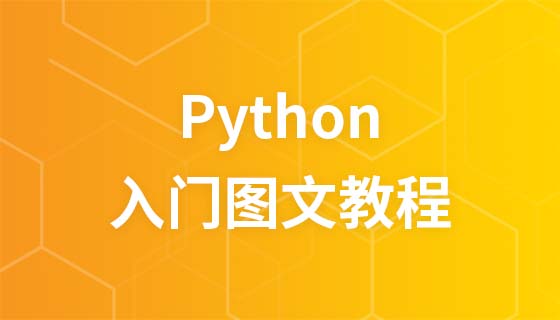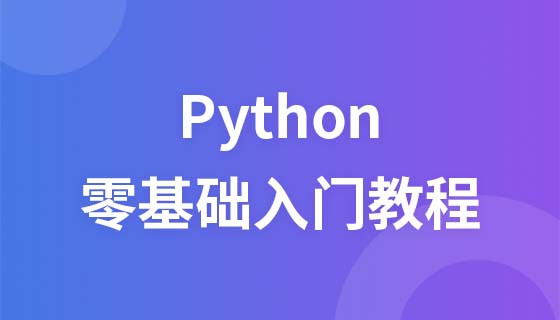【相关推荐:Python3视频教程 】
第一种np.where(condition, x, y),即condition为条件,当满足条件输出为x,不满足条件则输出y.直接上代码:
a = np.arange(10) //array([0, 1, 2, 3, 4, 5, 6, 7, 8, 9]) print(np.where(a > 5, 1, -1)) //array([-1, -1, -1, -1, -1, -1, 1, 1, 1, 1])
上面的挺好理解的,但是官网的例子不是太好理解,如下所示:
np.where([[True,False], [True,True]],
[[1,2], [3,4]],
[[9,8], [7,6]])
// 输出 array([[1, 8], [3, 4]])可以这么理解,第一行的bool值表示条件,它表示是否取值的意思,首先看[True,False],即第一的True值表示第一行取数值第一行的[1, 2]中的1,而不取下面的9,False表示不取第一行[1, 2]中的2,而取第二行[9, 8]中的8.下面同理得[3, 4].
为了方便理解再举一个例子:
a = 10
>>> np.where([[a > 5,a < 5], [a == 10,a == 7]],
[["chosen","not chosen"], ["chosen","not chosen"]],
[["not chosen","chosen"], ["not chosen","chosen"]])
//array([['chosen', 'chosen'], ['chosen', 'chosen']], dtype='<U10')第一行a>5True,则取第一行的第一个值,a<5取第二行的第二个值,下面也同理.
理解完第一种方法后,再来看np.where第二种方法:
即np.where(condition),只有条件 (condition),没有x和y,则输出满足条件 (即非0) 元素的坐标 (等价于numpy.nonzero)。这里的坐标以tuple的形式给出,通常原数组有多少维,输出的tuple中就包含几个数组,分别对应符合条件元素的各维坐标。
>>> a = np.array([2,4,6,8,10]) >>> np.where(a > 5) //(array([2, 3, 4]),) 返回索引值 >>> a[np.where(a > 5)] //array([ 6, 8, 10]) 返回元素值,即a[索引]
举一个代码例子,也是我遇到的:
a = array([[0., 1.], [0., 1.], [0., 1.], [0., 1.], [0., 1.], [0., 1.], [0., 1.], [0., 1.], [1., 0.], [0., 1.], [0., 1.], [0., 1.], [1., 0.], [1., 0.], [0., 1.], [0., 1.], [1., 0.], [0., 1.], [1., 0.], [0., 1.]]) np.where(a == 1) //(array([ 0, 1, 2, 3, 4, 5, 6, 7, 8, 9, 10, 11, 12, 13, 14, 15, 16, // 17, 18, 19], dtype=int64), // array([1, 1, 1, 1, 1, 1, 1, 1, 0, 1, 1, 1, 0, 0, 1, 1, 0, 1, 0, 1], // dtype=int64))
返回的两个array数组分表示第几行的第几个值为1,所以结果中的第一个array数组表示行索引,第二个array数组表示列索引也就是1的碎银索引.
1.np.where(condition,x,y) 当where内有三个参数时,第一个参数表示条件,当条件成立时where方法返回x,当条件不成立时where返回y
2.np.where(condition) 当where内只有一个参数时,那个参数表示条件,当条件成立时,where返回的是每个符合condition条件元素的坐标,返回的是以元组的形式
3.多条件时condition,&表示与,|表示或。如a = np.where((0
例如:
import numpy as np
data = np.array([[0, 2, 0],
[3, 1, 2],
[0, 4, 0]])
new_data = np.where((data>= 0) & (data<=2), np.ones_like(data), np.zeros_like(data))
print(new_data)结果:
[[1 1 1]
[0 1 1]
[1 0 1]]
从中可以看出data中每个元素只要满足data>=0并且data<=2, 满足就返回np.ones_like(data)对应坐标的值,不满足就返回np.zeros_like(data)对应坐标的值。当然x , y可以换成其他的值,只要与条件相同尺寸就可以。
【相关推荐:Python3视频教程 】
以上是Python详细解析之np.where()的代码应用的详细内容。更多信息请关注PHP中文网其他相关文章!


